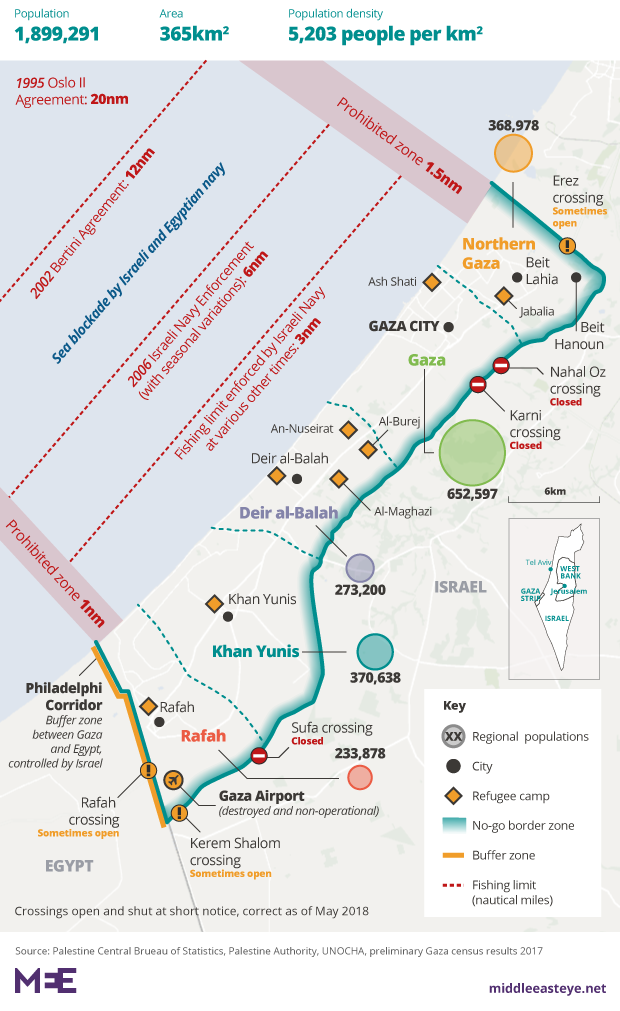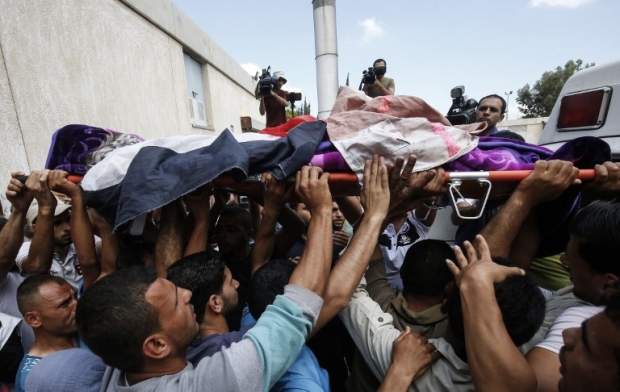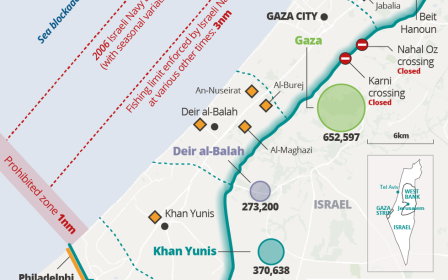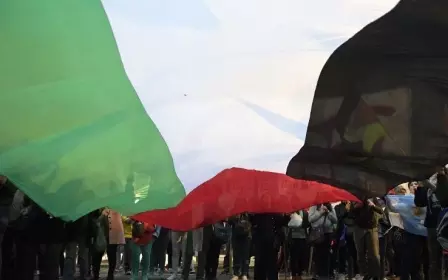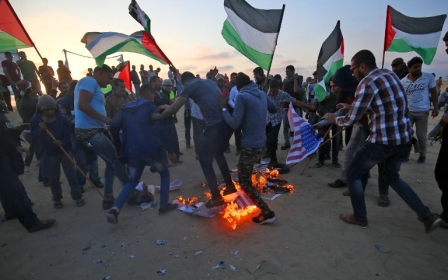Gaza protests are forging new path for Palestinians
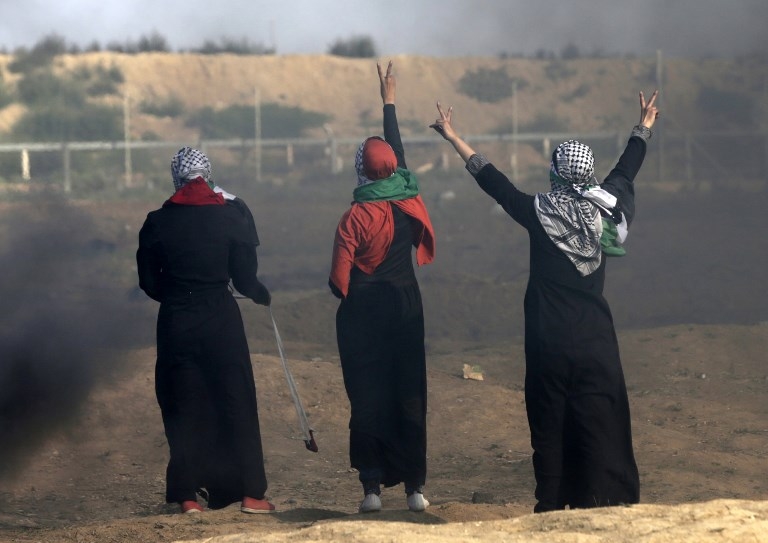
Gaza’s Great Return March constituted a qualitative shift in the course of Palestinian national action.
The Gaza Strip has been suffering from a long-standing siege and the fallout from three extensive and aggressive Israeli military operations, with the United Nations warning the territory could be uninhabitable by 2020. Palestinians channelled their uprising against the Israeli occupation into the Great Return March; Israel's oppressive and bloody response to the peaceful protests highlighted the extent of its impertinence, brutality and disregard for human rights.
This has mobilised the international community, both through global solidarity movements and official moves at the UN Security Council and Human Rights Council. The world has seen the true face of the Israeli occupation, which has been systematically violating all principles of international law.
The use of lethal force is part of the colonial doctrine, which aims to distort Palestinians' awareness of their rights.
Provoking Gaza's resistance
Israel's extreme right-wing leadership wanted to provoke Gaza's resistance forces into a state of violence and counter-violence, in an effort to reinvoke its lie of the right to "self-defence". The state accused the resistance of targeting the Israeli population on the border, misleading public opinion with the label of "terrorism".
Before the Great Return March began, the occupation tried to provoke Gaza's resistance forces by targeting tunnels and military sites. During the protests, the occupation stepped up its aggression against peaceful demonstrators, targeting children, women and elderly people, as well as members of the media and health workers. Medic Razan al-Najjar, 21, was the latest of these martyrs.
Israel wanted to trigger violent reactions in order to reach the level of conflict it desired, which it would use as an excuse to unleash its military might on Palestinians in Gaza, who are armed with nothing but their will and determination to fight for their dignity.One of the main objectives of the Israeli military escalation in Gaza was to reduce Palestinians' expectations for breaking the siege and facilitating the reconstruction process in the territory, which is still struggling to rebuild after the 2014 war. Instead, Israel has called for disarming the resistance in return for such concessions - even though a number of politicians support the idea of finding a solution to Gaza's humanitarian crisis in order to prevent an uprising that could damage Israel.
‘Deal of the century’
Israel may also have wanted to shift the focus away from the right of return, in line with the proposed features of the "deal of the century" promoted by the US administration.
The occupation's impertinence, and its attempts to eliminate Palestinians' rights through its strategic alliance with the United States, should be met with the continuation of the popular and peaceful protest movement, until the marches extend to the West Bank and the diaspora.
This must be backed by international solidarity campaigns, such as Freedom Flotillas, to break the siege, support the rights of our people and reject US decisions concerning Jerusalem, refugees and Palestinian land.
In order to maximise these tools, Palestinians must work to end their internal divisions and achieve national unity by agreeing on a liberal political programme that goes beyond the dead-end Oslo Accords, which Israel has used to break the unity of the land, its people and their identity.
Policy of fragmentation
Confronting the policy of fragmentation and disunity can only be achieved through a return to the Palestine Liberation Organisation (PLO) and reviving the Palestinian national identity, in order to thwart Israel’s elimination plans and restore determination to the just struggle of our people.
Any solutions in Gaza must take into account the goal of geographical unity with the West Bank, while preserving Palestinians’ right to live in Gaza without the current isolation and siege, which has been in place for more than a decade.
Recent events in Gaza have adjusted the national path, moving it beyond political divisions into a state of confrontation against the Israeli occupation. This has always been Gaza’s role: struggling to preserve Palestinian national identity in the face of Israel’s policy of dissolution.
- Mohsen Abu Ramadan is the former director of the Palestinian Non-Governmental Organisation Network (PNGO).
The views expressed in this article belong to the author and do not necessarily reflect the editorial policy of Middle East Eye.
Photo: Palestinian women flash the victory gesture as they stand before the fence with Israel during a demonstration along the Gaza border on 1 June 2018 (AFP)
New MEE newsletter: Jerusalem Dispatch
Sign up to get the latest insights and analysis on Israel-Palestine, alongside Turkey Unpacked and other MEE newsletters
Middle East Eye delivers independent and unrivalled coverage and analysis of the Middle East, North Africa and beyond. To learn more about republishing this content and the associated fees, please fill out this form. More about MEE can be found here.



